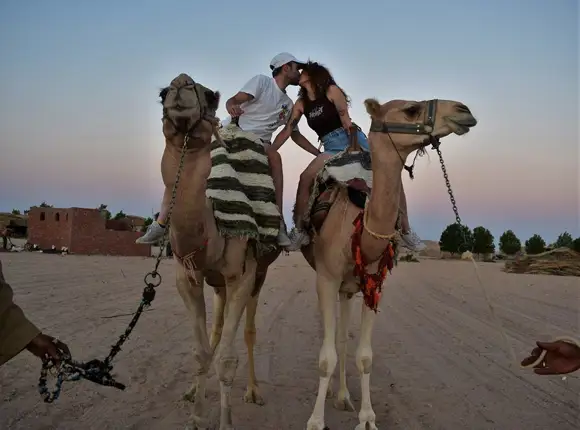
- Home
- Blog
Safari In Hurghada

Safari in Hurghada
Hurghada city is located to the most eastern part of the eastern desert of Egypt on the red sea coast. The city stretches to 36 kilometers along the seashore to be the biggest destination on the red sea coastline, Hurghada is 455 KM away from Cairo and 180 KM only from Qina, the closest city to Hurghada.
The city is named after “Hurghad” which is some kind of a long-lasting Arabic tree which was widely planted in the past, the word was derived later to “Hurghada” the present name of the city.
Hurghada is following the administration of the red sea governorate which includes (Ras Gharib, Safaga, Quseir, and Marsa Alam) but the city has the major governmental facilities and headquarters of travel and business agents.
Today, there are 248,000 inhabitants in Hurghada according to the latest statistics and the southern represent much of the city’s population due to the short distance between the city and local villages in south of Egypt.
Hurghada is accommodating different cultures and backgrounds. The local Egyptian lifestyle is overwhelmingly noticeable in the city’s local areas. While, the European lifestyle is prominently apparent in some places due to the significant presence of citizens either living or running their own business in the city.
Besides being an important stop on the trade routes for caravans, travelers and pilgrims between Egypt and Saudi Arabia for decades, Hurghada used to be a small fishing village as well, that lasted till the sixties when the government paid attention and support for exploring the city’s desert for oil wells, but work didn’t end up with the expected results then. A few years after, the Egyptian government gave a full back up to Egyptian businessmen to invest in the new city, but investments were basically in tourism field. However, that didn’t seem enough then!
In the late 1980’s Hurghada was put on top of the government’s priorities with a set independent annual budget. Real Estate projects were largely expanding along the touristy ones. Numerous economic residential complexes were built everywhere in Hurghada which attracted natives across the country to move to the new city and settle down with their families. From the 1990’s and on, thousands of people have moved to Hurghada and hundreds of huge projects had massively enlarged the city. Going back in time, it’s amazing how the city which would take a visitor just a few hours to see, would take a few days now to cover its total area.
1250 Km of turquoise water, splendid corals, exotic fish and windswept beaches. Monasteries, and hills, mountains, and ancient ports long forgotten.
The topography features of the region east of the Nile are very different from those at the western desert. The region’s most prominent feature is the easterly chain of rugged mountains, the Red Sea hills which extend from the Nile valley eastward to the Gulf of Suez and the Red Sea this elevated region has a natural drainage pattern that rarely functions because of insufficient rainfall. It also has a complex of irregular, sharply cut Wadis that extended westward toward the Nile.
The eastern desert is generally isolated from the rest of the country. There is no oasis cultivation in the region because of the difficulty in sustaining any form of agriculture except for a few villages on the red sea coast. There are no permanent settlements. There are three major national parks and protectorates within the Red Sea and the eastern desert. Up in the north end of the cost there is the north islands protectorate, further south close, to Marsa Alam there is Wadi Al Jemal National Park, the third largest Wadi in the Eastern desert draining into the Red Sea, and one of the best vegetated. Last but not least Elba national Park is located in the southern eastern part of the eastern desert.
